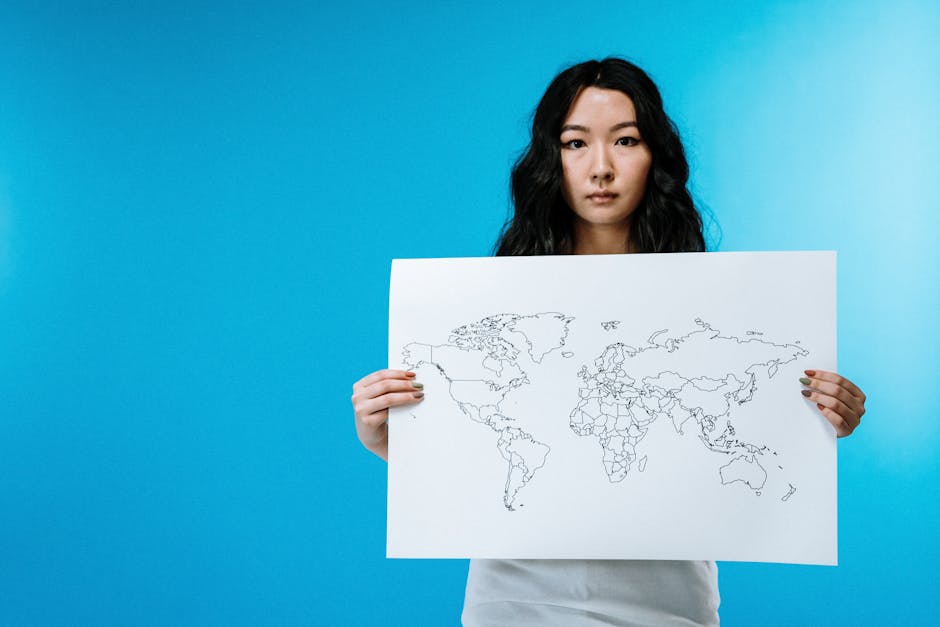Exploring Global Diversity Narratives: A Comprehensive Guide
Welcome to the diverse world of global narratives, where stories from different cultures, backgrounds, and perspectives intertwine to create a rich tapestry of human experiences. In today’s interconnected world, understanding and appreciating global diversity narratives is essential for fostering empathy, breaking down stereotypes, and building bridges across cultures. From historical accounts to contemporary tales, these narratives shape our understanding of the world and influence how we interact with one another.
Have you ever wondered how global diversity narratives impact our perceptions of identity, community, and belonging? Or how they contribute to the fabric of our shared humanity? Join us on a journey as we delve deep into the heart of global diversity narratives, exploring their significance, complexities, and implications in today’s globalized society.
The Historical Roots of Global Diversity Narratives
Global diversity narratives have a long and complex history, dating back to ancient civilizations and early human societies. From oral traditions passed down through generations to written accounts of conquests and migrations, these narratives have played a crucial role in shaping cultural identities and worldviews. For example, the epic of Gilgamesh, one of the oldest known works of literature, offers insights into the values and beliefs of ancient Mesopotamian society.
As civilizations expanded and interacted with one another, the exchange of ideas, beliefs, and stories became essential for cross-cultural understanding. The Silk Road, a network of trade routes connecting the East and West, facilitated the exchange of goods and knowledge, leading to the creation of new narratives that blended diverse cultural influences.
The Power of Representation in Global Diversity Narratives

Representation in global diversity narratives is crucial for ensuring that all voices are heard and valued. In recent years, there has been a growing emphasis on diverse representation in media, literature, and the arts. For example, the #OwnVoices movement has highlighted the importance of authentic representation of marginalized communities by authors who share those identities.
By amplifying diverse voices and experiences, global diversity narratives can challenge stereotypes, combat prejudice, and foster a more inclusive society. When individuals see themselves reflected in the stories they consume, they feel validated, heard, and empowered to share their own narratives.
The Role of Technology in Shaping Global Diversity Narratives

In the digital age, technology has revolutionized the way we share, consume, and interact with global diversity narratives. Social media platforms, online forums, and digital storytelling tools have democratized the creation and dissemination of diverse narratives, allowing individuals from around the world to connect and share their stories.
Virtual reality (VR) and augmented reality (AR) technologies have also opened up new possibilities for immersive storytelling, allowing users to experience different cultures and perspectives firsthand. These innovative tools have the potential to bridge geographical and cultural divides, fostering empathy and understanding across diverse communities.
Challenges and Controversies in Global Diversity Narratives

Despite the progress made in promoting diversity and inclusion, global diversity narratives are not without their challenges and controversies. Cultural appropriation, stereotyping, and misrepresentation continue to be pervasive issues in media and popular culture, perpetuating harmful stereotypes and erasing marginalized voices.
Additionally, the rise of fake news and misinformation has made it increasingly difficult to discern fact from fiction in global narratives. In a world where information spreads rapidly across digital platforms, critical thinking skills and media literacy are more important than ever for navigating the complex landscape of global diversity narratives.
The Future of Global Diversity Narratives
As we look towards the future, the evolution of global diversity narratives holds immense potential for fostering understanding, empathy, and solidarity across cultures. By embracing a plurality of voices and perspectives, we can co-create a more inclusive and equitable world where everyone’s story is valued and respected.
Emerging technologies such as artificial intelligence (AI) and machine learning are poised to revolutionize the way we engage with global diversity narratives, offering new opportunities for personalized storytelling experiences. Virtual reality (VR) concerts allow users to experience live music events in a fully immersive 3D environment, creating a sense of presence and connection across distances.
Expert Opinions on Global Diversity Narratives
We reached out to Dr. Maya Rodriguez, a leading expert in cultural anthropology, for her insights on the importance of global diversity narratives in today’s society:
“Global diversity narratives play a crucial role in shaping our understanding of the world and fostering intercultural dialogue. By listening to diverse voices and honoring multiple perspectives, we can build a more inclusive and compassionate society for future generations.”
Common Misconceptions about Global Diversity Narratives
One common misconception about global diversity narratives is that they are only relevant to certain communities or minority groups. In reality, global diversity narratives encompass a wide range of stories and experiences from people of all backgrounds, highlighting the interconnectedness of human experiences across cultures.
Comparative Analysis of Global Diversity Narratives
When comparing global diversity narratives from different regions and cultures, it becomes apparent that while there are unique cultural nuances and traditions, there are also universal themes that resonate across borders. Themes of love, loss, resilience, and hope are common threads that bind humanity together, transcending cultural and linguistic barriers.
FAQs about Global Diversity Narratives
Q: How can individuals contribute to promoting diverse representation in global narratives?
A: Individuals can support diverse creators, amplify marginalized voices, and engage critically with media to challenge stereotypes and biases.
Q: What role can education play in fostering understanding of global diversity narratives?
A: Education plays a crucial role in promoting cultural awareness, empathy, and respect for diverse perspectives. By incorporating diverse narratives into curricula, educators can empower students to embrace diversity and celebrate difference.
To Wrap Things Up
In conclusion, global diversity narratives are a powerful tool for fostering empathy, understanding, and connection across cultures. By embracing a plurality of voices and perspectives, we can build a more inclusive and equitable world where everyone’s story is valued and respected. As we navigate the complexities of a rapidly changing global landscape, let us remember the importance of listening, learning, and engaging with diverse narratives to create a more harmonious and interconnected world for future generations.




